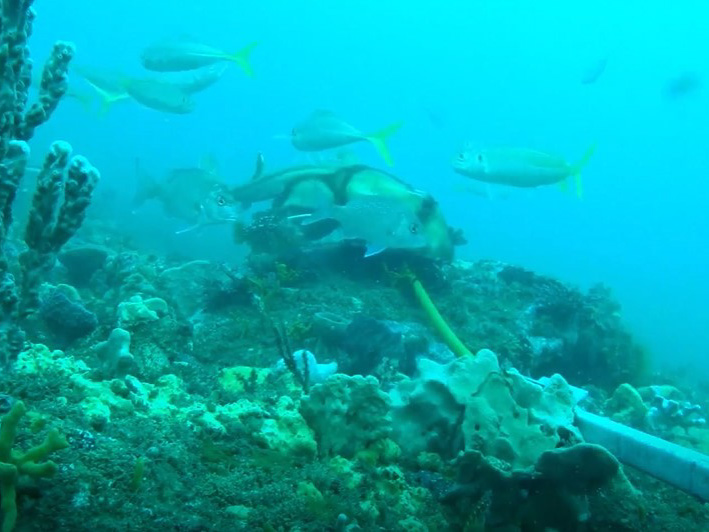New research published in the journal Ecology has found the impacts of extreme flooding don’t stop at the shoreline, they can reach far offshore, affecting fish communities on rocky reefs.

“We know that extreme flooding events have huge impacts on estuarine and coastal species. Our recent study has also found that this can hold true for fish further offshore,” explained lead author, Dr Matthew Rees, from the NSW Department of Primary Industries and Regional Development (DPIRD).
The research team assessed the abundance and diversity of rocky reef fish before and after severe flood events in 2022, using data collected through the DPIRD statewide fish monitoring program.
In 2022, Sydney experienced its wettest year on record. Four major floods in Sydney’s Hawkesbury-Nepean River system created an unprecedented coastal flood plume that extended 70 km offshore and reached depths of up to 50 metres.
Underwater video cameras placed on rocky reefs offshore from the river mouth captured changes in fish populations before and after the floods. The changes were compared to video analysis from unaffected reference sites.
The results were striking. In areas impacted by flood waters, total reef fish abundance fell by 50%, and species richness dropped by 13%.
The declines were primarily due to a reduction in the abundance of fish like Mado that feed on plankton (−75%), and also a reduction in fish that feed on seafloor invertebrates (−40%) such as Southern Maori Wrasse, Silver Trevally and Port Jackson Shark.
Researchers suspect the declines were primarily due to changes in salinity. However poor water quality, a reduction in prey, and degradation of important fish habitat such as kelp, may also have contributed.
A year on, many species had recovered with Silver Trevally and Port Jackson shark numbers increasing back to pre-flood levels.
However, some species such as Mado and Southern Maori Wrasse numbers remained significantly lower than prior to the flooding. Interestingly some species such as Snapper were not impacted by the flooding suggesting that impacts are related to the biology and ecology of individual species.
Fish assemblages at reference locations unaffected by flooding (at offshore sites and sites distant from large rivers) in the Port Stephens, Jervis Bay and Ulladulla regions remained stable over the study period.
Consequently, the impacts of flooding are likely to be greater on species that form localised populations such as many rocky reef fish but will be lower for species that have broad-scale population structure such as Snapper.
With extreme rainfall and flooding expected to become more frequent and intense due to climate change, the findings raise concerns about the long-term impacts of extreme flooding on the ecosystem functions and services provided by rocky reef fish.
“Our results suggest that future extreme flooding may disrupt temperate reef food webs and reduce the occurrence of some important reef species in flood affected regions,” Dr Rees said.
“Future monitoring in the affected area will be necessary to measure the recovery of fish population and will also help us gauge the long term impacts of severe flood events.”
You can read the full paper here: Quantifying the effects of extreme flooding on coastal reef fishes – Rees – 2025 – Ecology – Wiley Online Library
This research was funded through the NSW Government’s Marine Estate Management Strategy, and the Australian and NSW Government’s Estuary Asset Protection Program.







